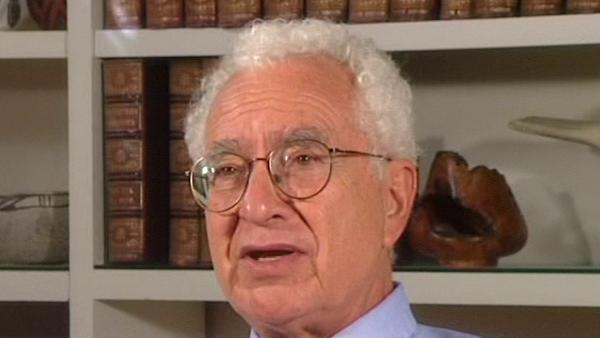Feynman was back from Brazil or wherever he had been, I think it was Brazil. And he had talked with Felix Boehm and said, ‘How are the experiments going? What's happening with the weak interaction?’ And Felix Boehm said, ‘Well, Murray thinks it's vector and axial vector.’ And Feynman said, ‘Oh my God! If it's vector and axial vector, then it could really be universal!And this and this and this and this! Not realizing that of course I would have thought of all that too. So he wrote some very pompous paper about it with some fancy reason why the theory had to be left-hand, had to be two components; why the neutrino had to be a two component neutrino and why the theory had to be this way and so on and so on. Essentially saying much the same things that… that we had put very modestly, extremely modestly in this little paragraph about the last stand of the universal Fermi interaction. But here he was proposing it, not just saying it was the last stand. He thought it was ridiculous to suggest something as ‘the last stand’ of something, he thought that was totally ridiculous as he was really proposing it seriously, making a huge fuss about it. I thought well, I wasn't going to write any more about this, but if you're going to put forward this fancy article proposing this which I'd already thought of some time ago and which Sudarshan and Marshak are discussing as well, I had better write an article too. So I started to write an article, much less pompous but with the same ideas in extenso instead of just a little paragraph on how it would work.
But then Bob Barker who was the Dean of the Division, the Chairman of the Division or something of that kind, Chairman of the Division or Dean of the Faculty, or something, I guess he was Chairman of the Division… Chairman of the Division of Physics, Mathematics and Astronomy,said that it wouldn't look good if two physicists who collaborated a great deal and were… worked in the same building in neighbouring offices were to write two rival papers with the same idea. He thought it wouldn't look very good and we shouldn't do it, that we should sign the same paper. So Dick said, ‘Well, why don't you add some things to this paper?’ So I added some ideas about strangeness and strange particles, participation in the weak interaction and some other things. But they weren't very carefully done because I didn't have any time, this paper was already written and out and it was written in a notation that I abhorred and with these ideas that I didn't share about the necessity of having two components and–I don't know, the whole thing was–I didn't like very much.
[Q] Was there friction between you?
Well, I was a little upset about this whole thing, I must say. And… and… but then the CVC was in there too because we had to discuss why the coupling constants were so accurately the same and... but it turned out that Gerstein and Zel'dovich had already proposed the CVC a year or so earlier, a year or two earlier. But we… our proposal was of course completely independent. CVC for a conserved vector current. But the current in the weak interaction, the vector current in the weak interaction was actually an isotopic spin current, so that the pion for example would make a contribution and so on and so forth.






